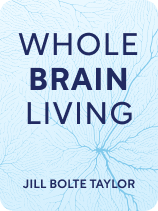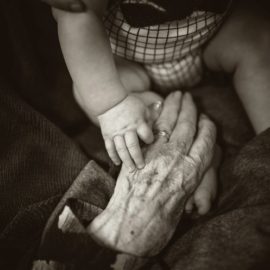

This article is an excerpt from the Shortform book guide to "Whole Brain Living" by Jill Bolte Taylor. Shortform has the world's best summaries and analyses of books you should be reading.
Like this article? Sign up for a free trial here.
What does the limbic system do? How does the limbic system process strong and protective emotions?
There are four characters in the brain that keep it a well-oiled machine. Two of these characters make up the limbic system, which is responsible for your emotions.
Learn more about the responsibilities of the limbic system, according to Jill Bolte Taylor’s book Whole Brain Living.
Left-Side Limbic System—Protective Emotions
What does the limbic system do? Since Character 2 lives in the limbic system, they process rapid emotional responses, and since Character 2 lives in the left hemisphere that categorizes and stores memories, they determine whether you’re safe or not depending on your past experiences.
For example, if you had a close friend in the past who abruptly abandoned your friendship, Character 2 might protect you from harm by drawing connections between that previous experience and similar behaviors observed in others in the present. In other words, Character 2 is good at learning from the past. However, they can also be overprotective and therefore draw you into negative thought cycles about things that could happen.
| How Research Links Emotions to Parts of the Brain Although some research supports the idea that the limbic system is associated with memory and emotions, other researchers disagree with the way Taylor maps emotional responses onto this part of the brain. In the past, some experts claimed that the left hemisphere housed emotions like happiness, pride, and anger (called “approach emotions” because they dictate how you interact with others). They also asserted that the right hemisphere housed “avoidance” emotions such as disgust and fear. However, other experts later pointed out that these studies were based on right-handed subjects. They now claim that approach and avoidance emotions are housed in different hemispheres depending on whether we’re right- or left-handed. This hypothesis was linked to the fact that each brain hemisphere controls physical movements on the opposite side of the body. Since people tend to express approach emotions (like by giving someone a high five) with their dominant hand, and they express avoidance emotions with their non-dominant hand, researchers theorized that these categories of emotions are linked to more intense brain activity in one hemisphere or the other, depending on our dominant hand. On the other hand, another review of research studies on this topic concluded that specific types of emotions don’t correspond to particular brain regions. |
Here’s how Taylor describes Character 2 in different contexts:
Taking care of your body: Character 2 is pessimistic when it comes to health and often dwells on small aches and pains. They also tend to worry about what could go wrong with their body in the future. However, whether something is actually wrong with their health or not, Character 2’s fear prevents them from taking any action to improve or cope with their health status.
(Shortform note: In this context, Taylor implies that a memory of something bad happening—like remembering someone who died from an undetected illness—triggers a debilitating fear response in Character 2. In The Whole Brain Child, Siegel and Bryson describe a similar phenomenon stemming specifically from childhood memories. They explain that experiences during childhood often become implicit memories—knowledge that you draw upon without consciously thinking about it—which then influence your worldview and behavior later in life.)
Workplace: Taylor says that Character 2 struggles to establish trusting relationships with their co-workers because they’re trying to avoid any kind of vulnerability. They’re also driven by fear and anxiety, causing them to exhibit a forceful and unfriendly leadership style. (Shortform note: We can infer that Character 2’s anxiety-driven leadership in the workplace stems from a fear of failing or not living up to someone’s expectations due to a past trauma. In The Happiness Advantage, Shawn Achor suggests that this is counterproductive since strong personal relationships between a boss and their employees lead to greater productivity and tenure for those employees.)
Romance: Character 2 often seeks comfort with other Character 2s in relationships because they can commiserate together and share a victim mentality when it comes to everyone else. According to Taylor, Character 2 may also gravitate toward a Character 1 who is happy to be in control and help take care of the Character 2. Taylor also warns that whenever our Character 2 relies on other people for their happiness, it leads to an unhealthy codependent relationship.
(Shortform note: Taylor doesn’t quite explain why Character 2 might prefer to be with another Character 2 or have a Character 1 take care of them. However, in Attached, Levine and Heller assert that having a partner who makes us feel safe in challenging situations helps us to lead more courageous lives. This suggests that Character 1 might be comforting to Character 2 because Character 1 thinks through situations rationally and is good at formulating plans, in contrast to Character 2, who might be overwhelmed by emotions during a crisis.)
| Comparing Character 2 to “Protectors” in IFS Taylor’s Character 2 parallels one of Schwartz’s IFS subparts that he calls “protectors” in No Bad Parts. In his metaphor of all the personality subparts as a family, the childlike, sensitive, and vulnerable parts are called “exiles.” The protectors then show up to defend the exiles from harm and negative feelings either by carefully managing the environment (like what you wear and who you spend time with) or by soothing us in reaction to negative experiences (like when we binge-watch tv or use substances to avoid psychological pain). While Taylor highlights the ways that Character 2 presents in interpersonal scenarios (in the workplace or romantic relationships, for example), Schwartz mainly discusses the ways that protectors trigger self-defense mechanisms to make you feel safe. Reflecting on both of these aspects may be helpful for identifying changes you want to make in terms of how you put up emotional safeguards. For example, Character 2 provides insight on how you might lash out against other people when triggered, and protectors shed light on how you might preempt harm by trying to fit in with others. |
Right-Side Limbic System—Experiential Emotions
Unlike Character 2, who assesses your safety based on past experience, Character 3 exhibits emotions that are wholly rooted in the present moment. Taylor says that although Character 3 initiates a fight or flight response when threatened, it’s also the character who feels uninhibited joy and loves to soak up every moment of living. Because Character 3 resides in the right hemisphere, they also enjoy creative activities to the point where they’re unaware of time passing—a state referred to as “flow.”
(Shortform note: In Ikigai, Héctor García and Francesc Miralles argue that by incorporating flow into your daily life, you can stay fully present, experience heightened creativity, and enjoy what you’re doing. They recommend a series of steps for intentionally channeling a flow mindset in your daily life—a mindset similar to that of Character 3. First, choose a task that’s just a bit beyond your current ability. It should be difficult enough to keep you engaged, but not so difficult that it makes you anxious. Then, give yourself a clear objective so you can focus on it completely. Next, remove potential distractions as much as possible and focus on only one task at a time.)
The flip side of Character 3’s playfulness and go-with-the-flow mentality is that they’re unpredictable and don’t necessarily respect authority figures or rules. (Shortform note: This aspect of Character 3 might be best described as impulsivity. Psychologists say that unlike spontaneity (which is anything impromptu or unplanned), impulsivity exposes you to some kind of risk. One strategy for managing impulsive behavior is to practice slowing down and giving yourself time to think through the consequences of your actions.)
Here’s how Taylor describes Character 3 in different settings:
Taking care of your body: Character 3 has a high level of body awareness, but unlike Character 1’s more practical concerns with their body’s state, Character 3 seeks to make the body feel good. Taylor writes that they’re naturally curious and therefore like to push their body’s boundaries (by trying new activities or training for a race, for instance). When faced with illness, Character 3 is likely to find creative solutions to maintain an enjoyable lifestyle. For example, if an active Character 3 suddenly required a wheelchair, Character 3 would still find fun wheelchair-accessible sports to participate in.
(Shortform note: Although Taylor frames Character 3’s behavior as primarily positive in this context, Character 3 could also encourage hedonistic behaviors, such as eating foods that are bad for your health simply because they taste good and satisfy you in the moment. In The Willpower Instinct, Kelly McGonigal says that to resist temptations such as this, we have to switch from a fight-or-flight physiological response (associated with the limbic system) to a pause-and-plan response (associated with the cerebral cortex). This suggests that in some situations, it’s beneficial in the long term to shift from Character 3 mode to a more long-term oriented Character 1.)
Workplace: Taylor says that Character 3 enjoys collaborating with other people and finds joy in their day-to-day work activities. One of their strengths is being able to switch between different projects easily, but they’re not great with deadlines and budgets.
(Shortform note: Taylor implies that Character 3s enjoy their work because they’re focused on what’s emotionally gratifying in the moment rather than doing a job because of how prestigious it is or how much money it will provide. In addition, staying focused on the current moment would enable Character 3 to switch to a new task without getting distracted by past or future tasks. However, in The One Thing, Gary Keller warns that when you switch tasks, you get a burst of dopamine, which means that task-switching can become addicting and decrease productivity.)
Romance: According to Taylor, Character 3 likes to mix things up when it comes to romance. They love the rush of new experiences and connecting with a variety of people, and they aren’t keen on making long-term commitments. Their unpredictability may be fun for their partners initially but will eventually be off-putting to Character 1s or Character 2s.
(Shortform note: We can infer that Character 3 prefers not to make commitments because they act on what feels right in the moment (the limbic system response), whereas commitments are an agreement about what role you’ll fill in the future. Given Character 3’s unpredictability, this trait may be unpleasant to Character 1s because Character 1 loves order and consistency. Unpredictability might also be undesirable for Character 2s if it triggers anxiety (stemming from a past memory) about whether the person will stay in the relationship. In Minimalism, Joshua Fields Millburn and Ryan Nicodemus write that to avoid these incompatibilities, it’s important to develop a vision for what you want your relationships to be like.)

———End of Preview———
Like what you just read? Read the rest of the world's best book summary and analysis of Jill Bolte Taylor's "Whole Brain Living" at Shortform.
Here's what you'll find in our full Whole Brain Living summary:
- How you can choose to access different parts of your brain
- The four areas of the brain that perceive and navigate the world differently
- How to achieve emotional well-being by getting to know your brain better






